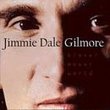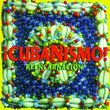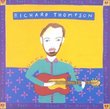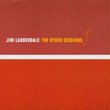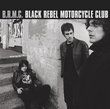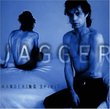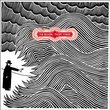| All Artists: Ravi Coltrane Title: Moving Pictures Members Wishing: 0 Total Copies: 0 Label: RCA Original Release Date: 4/7/1998 Release Date: 4/7/1998 Genres: Jazz, Pop Styles: Modern Postbebop, Bebop Number of Discs: 1 SwapaCD Credits: 1 UPC: 743215588726 |
Search - Ravi Coltrane :: Moving Pictures
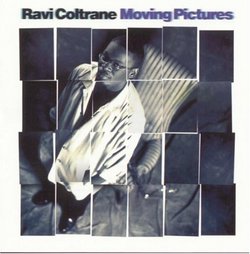 | Ravi Coltrane Moving Pictures Genres: Jazz, Pop
Rather than springboard to early fame on the strength of his father's name, this young saxophonist spent years honing his skills as a sideman--most notably with Steve Coleman, who produced this debut. Coltrane's playing is... more » |
Larger Image |
CD DetailsSynopsis
Amazon.com Rather than springboard to early fame on the strength of his father's name, this young saxophonist spent years honing his skills as a sideman--most notably with Steve Coleman, who produced this debut. Coltrane's playing is quiet, reflective, and filled with a generous spirit; his mournful blowing on tunes like Horace Silver's "Peace" and his own "Narcine" allows room for his collaborators to shine. And backed by an excellent band consisting of Michael Cain (piano), Lonnie Plaxico (bass), and Jeff "Tain" Watts (drums), he shows he can also take on aggressive numbers like Joe Henderson's "Inner Urge" and his own "Mixed Media." Though still developing his own voice as a musician, Coltrane demonstrates that he is very much his own man. --Erik Pedersen Similarly Requested CDs
|
CD ReviewsAn extraordinary debut. bena | Washington, DC United States | 07/09/1998 (5 out of 5 stars) "Last month there was a great issue of Downbeat all about the Coltrane legacy that featured a wonderful interview with Ravi Coltrane. Within this feature Ravi spoken freely about what the jazz scene expected of him. Obviously they expect him to be his father. Well he did exactly what his father would hope he would do, he resisted the temptation to completely give into the Coltrane legacy and emphasized his individuality. If there is one aspect that John Coltrane emphasized throughout his career was for the artist to explore their inner uniqueness and self-reliant strength. Ravi may not possess the free-flowing wall of sound tenor explosion that his father had, but he does have a strong sense of appreciation for the past and a powerful individuality that is intelligent and tender. I have only gotten so far as the first paragraph, and as usual I'm stuck trying to write something moving. Sometimes words are not enough to describe a recording. Sometimes I wish I could just sit down with the whole world and listen carefully to a record like Ravi's Moving Pictures and revel in its elaborate and distinct flavor as a collective consciousness. My friend John Murph came over one night for a little listening party and we checked out a lot of new music, but it was Ravi's recording that really stood out. Including the Downbeat article I had read other articles about this debut from numerous media sources and expected it, well frankly, to disappoint. Whenever the jazz media goes nuts over something it is usually for the wrong reason. In this case I thought that they were just giving lots of press to Ravi because he's Coltrane's son, but what I discovered listening to the album with Murph that night, is that it is far better than I could have imagined, and for once the jazz critics and I seem to agree. Non-committal listeners would miss most of the intricacies in Ravi's playing. I really began to love this record after listening to it ov! er and over again on headphones. I wanted to get as close as possible to the sound, as if to surround my psyche with the it's aural sensitivity. I have do this frequently with new recordings, to try to completely engulf myself. But with "Moving Pictures" unlike other recordings, I ended up preferring to listen to it in this way. The group is tremendous; Steve Coleman, shines like the star he is. Michael Cain's piano work is just a mind blower, I gotta tell 'ya baby, he plays some runs that just make me sweat. Then there is the tension filled expansive and lush landscapes of rhythm created by the always creative Jeff "Tain" Watts and compatriot Lonnie Plaxico. I haven't heard much of Ralph Alessi's playing before, but he definitely adds a temporal layer that is evocative and complex. The tracks that feature the group Ancient Vibrations is reminiscent of Rodney Kendricks efforts on his album last year Last Chance for Common Sense and since I love that record I find the percussive excursions interesting and sublime. Definitely one of the highlights of Moving Pictures as got to be Ravi's version of the Joe Henderson classic "Inner Urge". He treats this composition only compositional, meaning that he derives his playing from the inward motion of notes rather that attacking the tune from an outward palette. The arrangement leaves lots of space for the players to freely improvise without improvising freely. It is really quite fascinating. Over-all this record has quickly become one of my favorite albums. I look forward to hearing more from Ravi Coltrane in the future. Truly the Coltrane legacy carries on from father to son but not in regards to technique or sound but rather self-worth and determination. END" A brilliant debut 11/16/1998 (5 out of 5 stars) "This is a really nice CD with everything perfectly falling into place. The selection of the extraordinary musicians exactly matches the arrangements and the fine compositions. Ravi Coltrane's first CD as a leader is not so much a showpiece of his speed but of his taste and his capability as a composer, as an interpreter and as a leader of a musical collective. Ravi Coltrane doesn't adhere to the usual and boring hierarchy of solo-parts (the leader always first). Moreover, the CD creates a very individual musical atmosphere of a tense calmness which looses nothing of its charm even after repeated listenings." A breakthrough album 09/07/1998 (5 out of 5 stars) "I will be brief since another reviewer has already covered this recording quite well:If you have been previously underwhelmed by Ravi's work in the various groups he has played with as a sideman, get this. This is jazz music of the late 90s as it should be: well developed solos (rather than endless choruses of generic jazz information), ensemble improvisation which develops the themes from the compositions, and well conceived and crafted rhythmic bases / grooves in the rhythm section."
|

 Track Listings (11) - Disc #1
Track Listings (11) - Disc #1